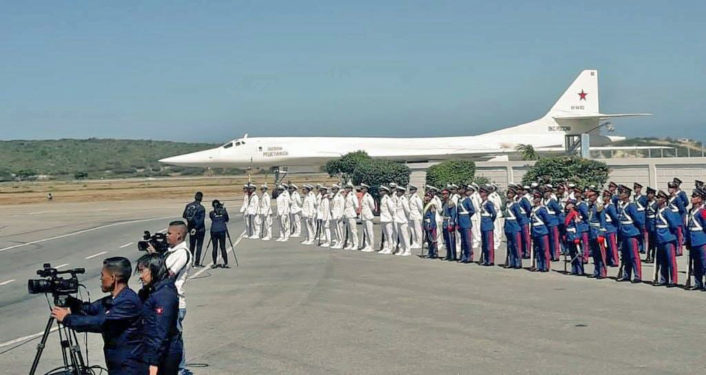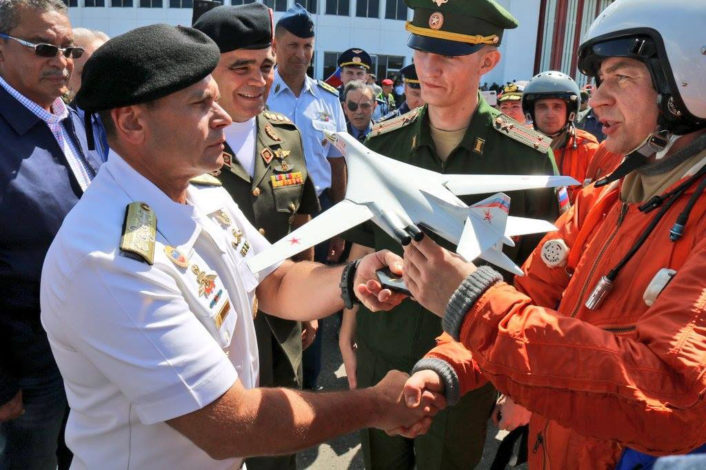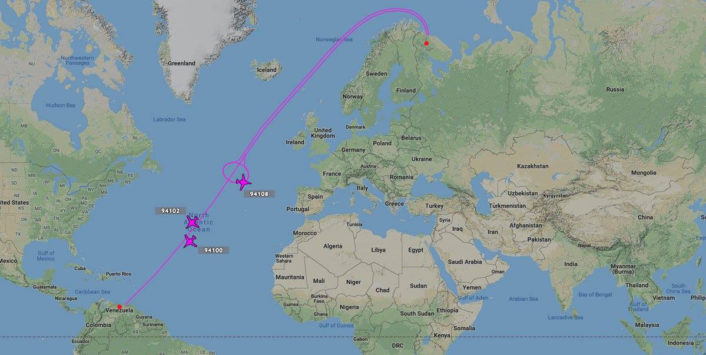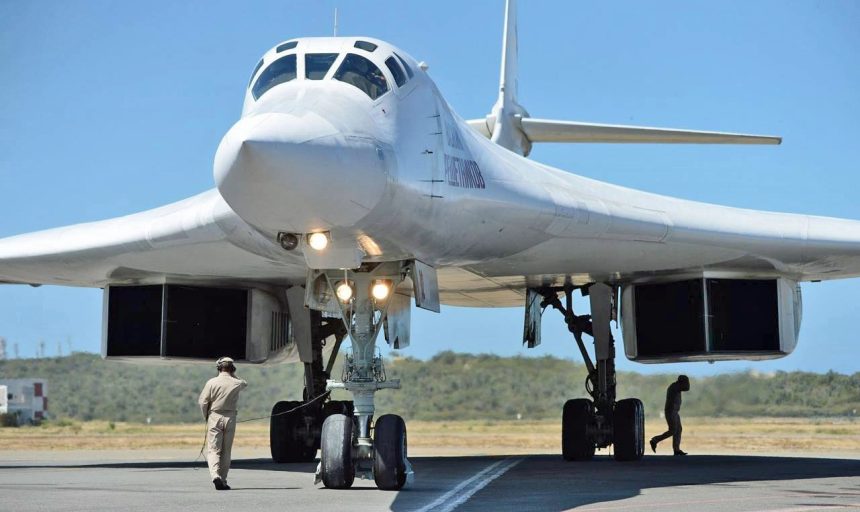World’s Largest Bombers Rattle Sabers and Please Spotters in Southern Caribbean.
Two Russian Tupolev/ United Aircraft Corporation (UAC) Tu-160M1 supersonic bombers, NATO codename “Blackjack”, arrived in Venezuela on Monday, Dec. 10, 2018 amid speculation about rising tensions between Russia and the U.S. along with continued questions about the status of Venezuela’s government. It’s the third deployment after those in 2003 and 2008.
The two massive Tu-160 “White Swan” bombers arrived at Simón Bolívar International Airport outside Caracas on Monday following a 10,000-kilometer (6,200-mile) flight across the Atlantic from Engels 2 Air Base, 14 kilometers (8.7 mi) east of Saratov, Russia. The aircraft belong to Russia’s elite 121st Guards Heavy Bomber Aviation Regiment, the only unit to operate the approximately 11 operational Tu-160 aircraft of 17 reported total airframes from 6950th Air Force Base.
Interestingly, each of the Tu-160 fleet is named after a prominent Russian hero. The two aircraft that deployed to Venezuela are the “Nikolay Kuznetsov” and the “Vasily Reshetnikov”. Sources have suggested that the Tu-160s may participate in joint Venezuelan/Russian training operations in the region.

The two Tu-160s were supported on the deployment by an accompanying Antonov An-124 Ruslan heavy lift cargo aircraft for support equipment and spares and a retro-looking Ilyushin Il-62 passenger aircraft carrying support, diplomatic and media personnel to accompany the deployment.
Interestingly, some flight tracking data posted to social media show that the mission initially included three Tu-160 heavy bombers, or, two Tu-160s and an aerial tanker. The navigational track shows one aircraft orbiting over the central Atlantic at mid-route from their departure base in central Russia on the way to the southern Caribbean. This third aircraft may have been the routine use of a back-up aircraft or for midair refueling. The third aircraft, depicted in the tracking graphic as an additional White Swan, reversed course over the Atlantic at mid-course and returned to their base.

The Tu-160s flying off Scotland triggered the scramble of two RAF Typhoon jets from RAF Lossiemouth, carrying, for the first time in a QRA (Quick Reaction Alert), Meteor BVR AAMs (Air-to-Air Missiles). While the Typhoons did not intercept the Russian bombers, the Blackjacks were escorted by RNoAF F-16s for a small portion of their journey.

Popular news media hyped the mission by sensationalizing the nuclear capability of the Tu-160 and the potential threat it could pose to the U.S. mainland from the Caribbean. It is a certainty that the aircraft dispatched by Russia are not armed with nuclear weapons or likely any strike weapons at all. The likelihood is the Tu-160 mission is largely a diplomatic show of resolve in the wake of U.S. remarks that, as Secretary of State Mike Pompeo was quoted in a December 9 Washington Post article, “The United States will no longer ‘bury its head in the sand’ about Russia’s violation of the Intermediate Range Nuclear Forces Treaty of 1987.”
Diplomatic sabre rattling aside, photos from the mission had the feel of an airshow display more than a strategic nuclear weapons deployment. Bands and dignitaries greeted the aircraft in Maiquetia airport outside Caracas under brilliant Caribbean sun. Photos and video shows a member of the Black Jack aircrew giving a model Tu-160 to a Venezuelan officer as a remarkable keepsake of the mission. Venezuelan press ran a graphic depicting how the aircraft could strike the continental U.S. from the Caribbean.
The Tu-160 is a noteworthy aircraft because of its size, speed and rarity. While the U.S. cancelled its ambitious XB-70 Valkyrie super bomber program in 1969 and later developed the B-1 and low-observable B-2 along with the upcoming B-21 Raider, Russia has begun a program of updating avionics, engines and weapons systems on the Tu-160 and starting production of the upgraded bombers again. The first of the “Tu-160M2” upgrades, essentially a new aircraft built on the old planform, flew earlier this year with operational capability planned for 2023. The new Tu-160M2s will not be rebuilt, upgraded existing Tu-160s, but rather new production aircraft coming from the Tupolev plant. Russia says it will build “50” of the aircraft.
The Tu-160 has taken part in the Air War in the skies over Syria. At least one Tu-160 aircraft flew a strike mission on Nov. 17, 2015 that hit ISIL targets in Syria using Russian 3M-54 Kalibur cruise missiles launched at standoff range.









